Soybeans - what are they and what do they look like?
Soy is found in many products. Manufacturers are doing their best to replace meat and dairy products with it. It is believed that soy is the main source of vegetable protein. At the same time, the addition of soybeans significantly reduces the cost of the final product.
Read the article about what food soy is and what products are made from it.
What are soybeans and soybeans
Soybean (lat. Glycine max) is an annual herbaceous plant, a species of the genus Soybean (Glycine) of the Legume family.
What does soy look like?
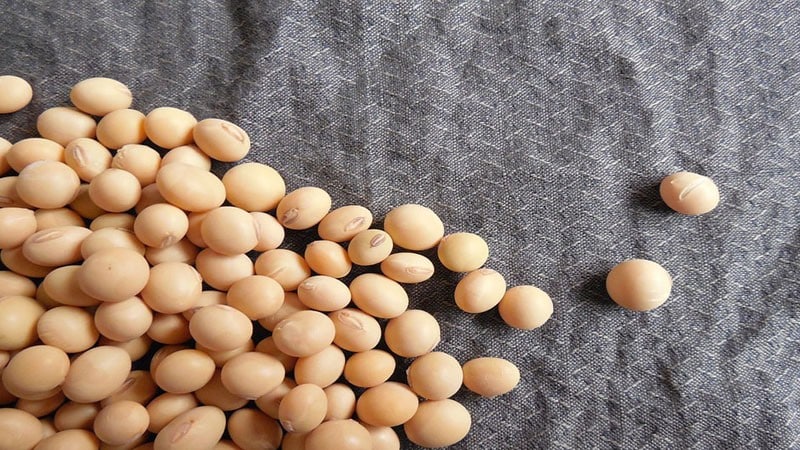
The stems of the crop are bare or pubescent, thin or thick. Height is from 15 cm to 2 m. The leaves are trifoliate, there are 5,7,9 leaflets. The leaves are pubescent, with transverse veining.
How soybeans bloom
The flowers are small, purple in color. They are odorless and hardly noticeable among the leaves. First, flowers appear in the lower and middle parts of the main stem; after 5-6 days, active flowering begins along the entire stem. This phase lasts for 5-11 days, then the process slows down.
The duration of flowering depends on the variety - from 12 to 43 days. Favorable conditions - air temperature +20...+26°C, relative air humidity 65-80%.
The process is most active in the morning; the plant does not bloom at night.
Soybeans
Soybean seeds are called beans (photo below). Soybeans are large - 4-6 cm in length, resistant to cracking. The fruit is opened by two valves along the ventral and dorsal sutures. The bob color is grey.
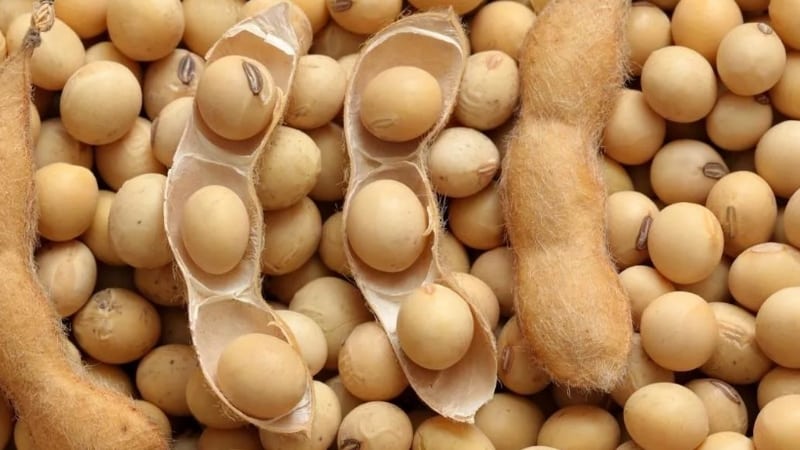
Inside the fruit there are 2-3 oval-shaped seeds with bulges.
To draw your attention to what kind of nutritious product this is, let’s talk about the chemical composition of soybeans (quantity indicated per 100 g):
- proteins - 13 g;
- fats - 6.5 g;
- carbohydrates - 11 g;
- vitamins A, group B, C, PP - the amount depends on the conditions growing and storage;
- potassium - 650 mg;
- calcium - 200 mg;
- sodium - 65 mg;
- sodium - 15 mg;
- phosphorus - 195 mg;
- iron - 3.55 mg;
- zinc - 0.9 mg;
- copper - 120 mg;
- manganese - 0.5 mg.
Origin story
Soybean is the oldest cultivated plant on the planet. According to scientists, the plant formed as a crop about 6-7 thousand years ago in China.
Reference. In China, the crop is highly valued and called the "Great Bean".
Mentions of soybeans are found in ancient Chinese literature dating back to the period around 3-4 thousand years BC. e. Images of the culture have been discovered by historians in China on turtle shells, bones and stones.
From China it was brought to Korea - this happened around 500-400 BC. e. There it also received the status of an important cultivated plant and was actively used by the local population for food.
Around the same period of time, the plant came to Japan, since the Japanese islands were colonized by Korea for a long time.
In 1691, the German botanist Engelbert Kaempfer visited the eastern countries. He became interested in soybeans, and he described it in detail in his work “Amoentitatum Exoticarum Politico-Physico-Medicarum”. After this, the culture became known to European naturalists. However, it began to be cultivated in Europe somewhat later: from 1790 in England and from 1885 in France.
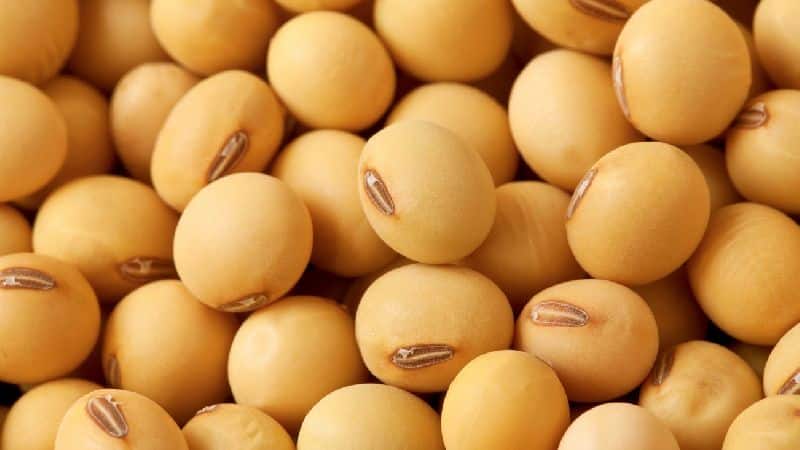
In our country, the first experimental plantings of the crop were carried out in 1877 on the territory of the Tauride and Kherson provinces.Selection work was first carried out at the Amur Experimental Plant in the period from 1912 to 1918. However, during the Civil War, the experimentally bred population was lost.
Amur yellow soybean was restored by 1923-1924, but the phenotype of the variety was somewhat different from the original one. As a result of the active work of breeders during the same period, the first domestic variety was obtained - the Amur yellow population, which was actively cultivated until 1934.
Mass introduction and the beginning of cultivation of the crop in Russia began in 1924-1928. - they began to grow it in the Rostov region, Stavropol and Krasnodar territories.
This is interesting:
Varieties and varieties of beans: faba (garden), ornamental, large-fruited.
Where and how does it grow
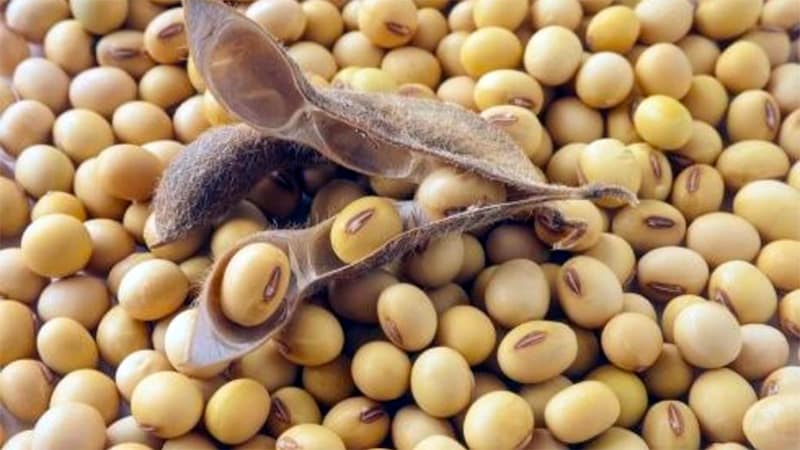
The crop is cultivated in Asia, Southern Europe, North and South America, Central and Southern Africa, Australia, on the islands of the Pacific and Indian Oceans at latitudes from the equator to 55-60°.
In our country, it is grown in the Far East: in the Amur region, Primorsky, Khabarovsk, Krasnodar and Stavropol territories.
Soybeans are sown in May - June at a soil temperature of at least +8...+10°C. The culture requires loose, fertile soil and an area protected from the wind.
The crop is planted in a wide row with row spacing of 45 cm, leaving a distance of 10-15 cm between plants.
The harvest is harvested in August - September. Maturity is determined by the yellowness of the leaves and the characteristic loud noise of the beans when shaken.
What products are made from soybeans
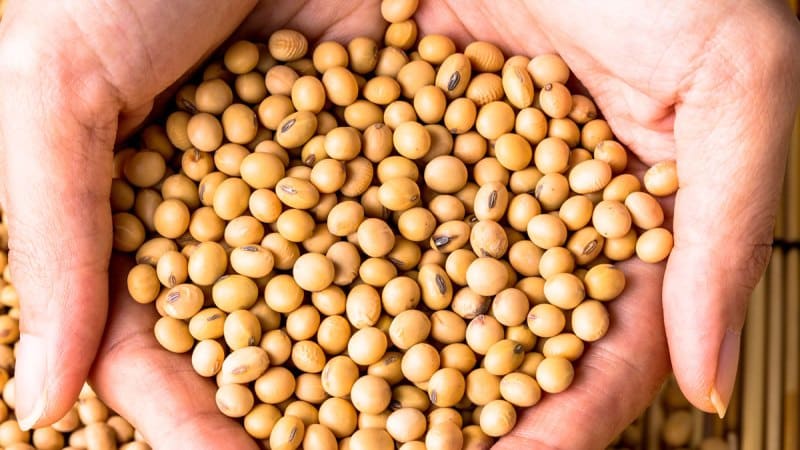
Soybeans are rich in protein, making them often used as an inexpensive substitute for meat and dairy products.This not only reduces the cost of the product, but also makes it possible for people who do not eat meat, do not digest lactose, or are on a diet to consume it.
Products made from soybeans:
- Oil. This is a universal product that is used not only for food, but also for industrial purposes (some paints and olive oil are made from it). Soybean oil is consumed exclusively in refined form, as it has a specific fishy smell.
- Milk - an alternative to cow's milk. It is indicated for people with liver, kidney, stomach diseases, and those suffering from lactose or milk protein intolerance.
- Tofu. What is this bean curd made from? The product is obtained from soy milk by adding a special mushroom culture. Tofu replaces meat in Chinese cuisine. The Chinese call it "boneless meat." The product is recommended for use for gastritis, diabetes, cardiovascular diseases, and is used by athletes to build muscle mass.
- Cocoa - an inexpensive and healthy drink that restores energy.
- Meat - an analogue of regular meat, filled with protein, is well absorbed and reduces cholesterol. The product is made from soy flour, water, and food additives.
- Sauce. A favorite product in many countries. It is made by fermenting soybeans under the influence of fungi. Making soy sauce is a complex technological process that takes from 6 months to 2 years.
- Miso. The product is a fermented soybean paste. Miso is used in Japanese cuisine.
Conclusion
Soy is an ancient oriental crop, and soybeans are an analogue of dairy and meat products for vegetarians and people on a diet. Milk and cheese made from soy are much cheaper than animal products.Soybeans are used to make meat, the protein content of which is not much inferior to natural meat, cocoa, and delicious sauces.